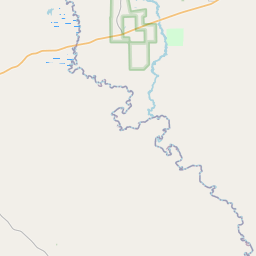Rusk Penitentiary Building
Historical marker location:












The abundance of iron ore for use in manufacturing prompted a commission appointed by Gov. Richard Coke in 1875 to select this region for a state penitentiary. In 1877 this 19,000-acre tract was purchased form T. Y. T. Jamison and his wife. Contractors Kanmacher and Denig of Columbus, Ohio, built this structure the following year. The walls are of two-and-a-half foot thick sandstone. The administrative offices, a hospital, chapel, dining area, and cells were housed here.
The prisoners helped construct the Texas State Railroad from Rusk to Palestine. They built the "Old Alcalde" iron ore smelting furnace adjacent to this structure. The furnace produced iron products for construction throughout the United States and for use in the erection of many state buildings. Convict labor was used in the area at contract prices.
In 1917 the Texas Legislature changed the facility to a state hospital for the mentally ill. The building was renovated and ready for occupancy by 1919 and operated under the name of Rusk State Hospital.
The Department of Mental Health and Mental Retardation was designated as the governing body in 1963. This structure became the administrative center for the hospital
As one of the most visible programs of the Texas Historical Commission (THC), historical markers commemorate diverse topics in Texas history, including: the history and architecture of houses, commercial and public buildings, religious congregations, and military sites; events that changed the course of local and state history; and individuals who have made lasting contributions to the state, community organizations, and businesses.
The Texas Rangers, a famous law enforcement agency, were first organized in 1835 to protect settlers from Native American attacks.
In 1837, the Texas Congress established Cherokee County, named after the Cherokee people, who had settled in the area. The county seat was initially located in the town of Rusk, which had grown as a result of the influx of settlers. Over the years, the county went through various changes, with the establishment of new towns and the growth of the local economy. Agriculture, particularly cotton and livestock farming, became the backbone of the county's economy.
During the Civil War, the county faced significant hardships as many men from Cherokee County enlisted in the Confederate Army. The economy suffered, and the county experienced both political and social unrest. However, following the war, the region gradually recovered, and new industries such as lumbering and oil exploration emerged.
In the 20th century, Cherokee County witnessed significant changes in its economy and demographics. The discovery of oil in the early 1900s brought an economic boom to the area, attracting new businesses and residents. Today, the county continues to thrive, with a diverse economy that includes agriculture, manufacturing, and tourism. The county also pays tribute to its Native American heritage through various cultural and historical organizations.
Cherokee County Timeline
This timeline provides a glimpse into the major events and milestones that have shaped the history of Cherokee County, Texas.
- 1846: Cherokee County is created and organized.
- 1847: The town of Rusk is designated as the county seat.
- 1850s: The area sees conflicts between the Cherokee and local settlers.
- 1861-1865: Cherokee County residents serve in the Confederate Army during the Civil War.
- 1872: The International-Great Northern Railroad is built through Rusk, boosting the local economy.
- 1900: The discovery of the large Berry gypsum deposit leads to the establishment of the Frankston Gypsum Company.
- 1930s: The Great Depression causes significant economic challenges for Cherokee County.
- 1942: Camp Fannin, a World War II army training camp, is established in Cherokee County.
- 1982: Lake Palestine is completed, providing recreational opportunities for residents and visitors.
- Present: Cherokee County continues to be a vibrant community with a mix of agricultural, industrial, and recreational activities.